“You can’t grow anything in the summer.” This is a common misnomer you hear in the Phoenix-area low desert. But it’s just that, a misnomer! Plants have a remarkable ability to cope with stress and protect themselves if you provide the tools, particularly healthy soil.
However, the extreme summer temperatures (which can reach over 115F/46C here in Phoenix) cause major heat stress for all but the most heat-loving or native trees or plants. Stress in the plant world basically means a deviation from normal growing conditions. When you think about it, we are growing most edibles outside of their normal growing conditions as tomatoes and mangoes and the like will not grow here on their own (without supplemental water, shade, and soil improvements).
High summer temperatures don’t just impact us here in the Phoenix low desert, though. Backyard gardeners, commercial growers, and fruit tree hobbyists everywhere can benefit from these amazing amendments.
So what is this magic plant elixir?
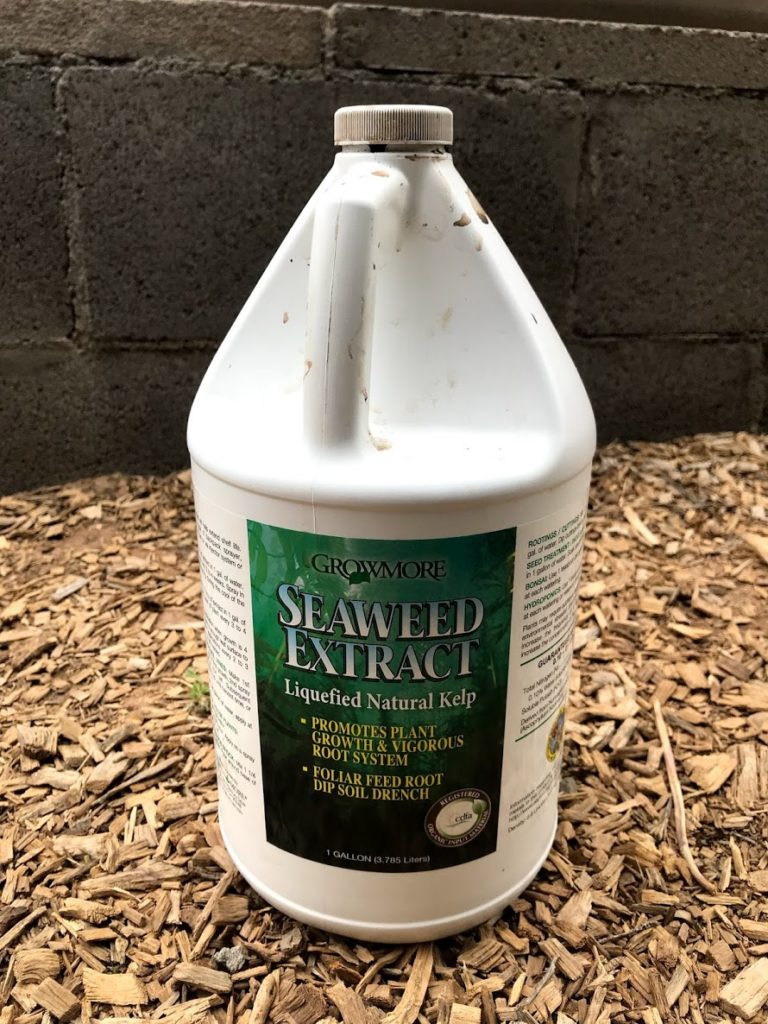
The first ingredient is
SEAWEED EXTRACT
Seaweed extract is basically liquified kelp and is considered a biostimulant. In addition to containing nearly every necessary readily-available (chelated) micronutrient, liquid seaweed also contains powerful plant hormones that help fight stress. Betain is one of the most beneficial hormones in the summer since it helps plants increase water uptake, particularly when under stress. The diverse polysaccharides stimulate root growth both directly and indirectly through soil microbial growth and also turn on a plant’s natural defenses to pests and disease.
Seeds soaked germinate faster and have better root growth. Studies have shown that with the addition of seaweed extract:
- Grapes have higher sugar content
- Geraniums produce more prolific flowers
- Cucumber yields increase up to 40% and suffer fewer issues such as softening
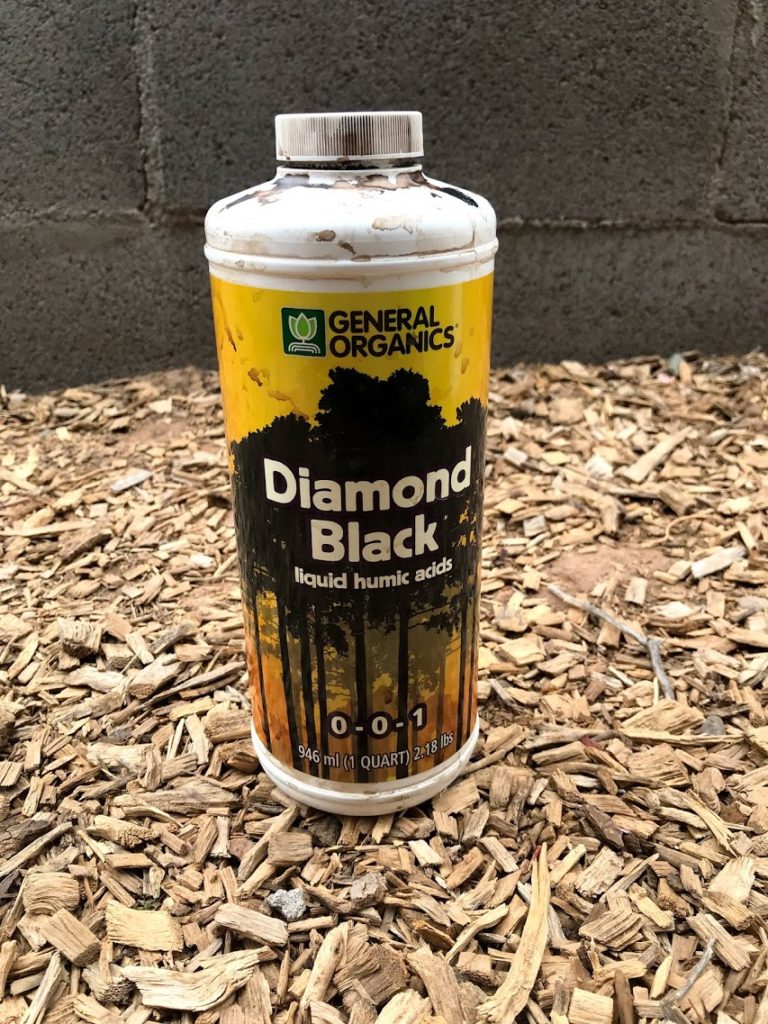
The second ingredient is
HUMIC ACIDS
Humic and fulvic acids are the final broken down/decayed form of organic matter and act as a medium by which nutrients and water are held and transferred from soil to plant roots.
It is also completely decomposed, so it does not compete with your plants for nutrients/nitrogen the way compost does. Humic acids also have incredible longevity in soil, well beyond that of any compost.
This is CRUCIAL in our dense clay soils because they are usually devoid of organic matter. Humic acids are harvested from large deposits in the Dakotas and a new one recently discovered in New Mexico.
Humic acids change the structure of soil both physically and chemically.
Physically, humic acids improve aeration of soil by loosening dense clay. This improves overall soil and microbial health and helps your soil retain water, increasing drought resistance
Chemically, humic acids optimize your plants’ ability to uptake nutrients, PARTICULARLY in highly alkaline situations like ours. It makes iron more readily available to plant roots, reducing chlorosis. Humic acids are also amazingly able to reduce the bio-availability of toxic substances in the soil.
Another huge benefit of humic acid here in the low desert is their ability to neutralize pH. Standard hose water pH is highly alkaline (usually 7-8+). Adding humic acids reduces the pH to optimal/neutral levels for most tropicals and common vegetable garden plants (pH 6).
Thanks to Robert Maloley for his insights into this important benefit of humic acids!
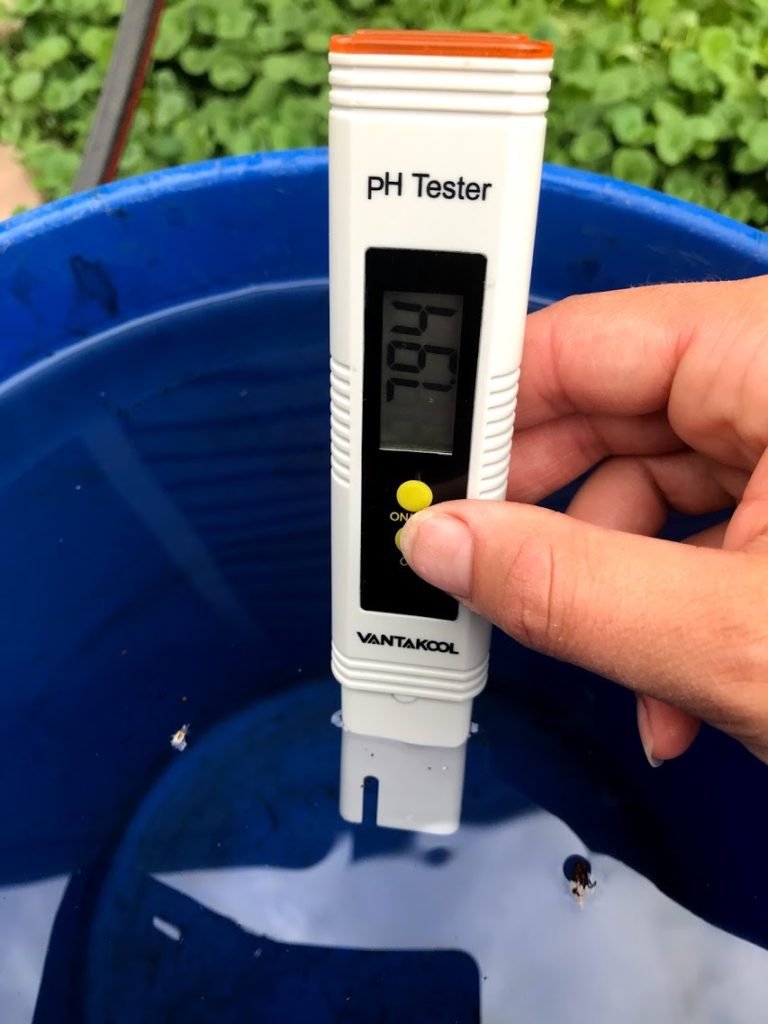
pH in a 5-gallon bucket of water prior to adding amendments
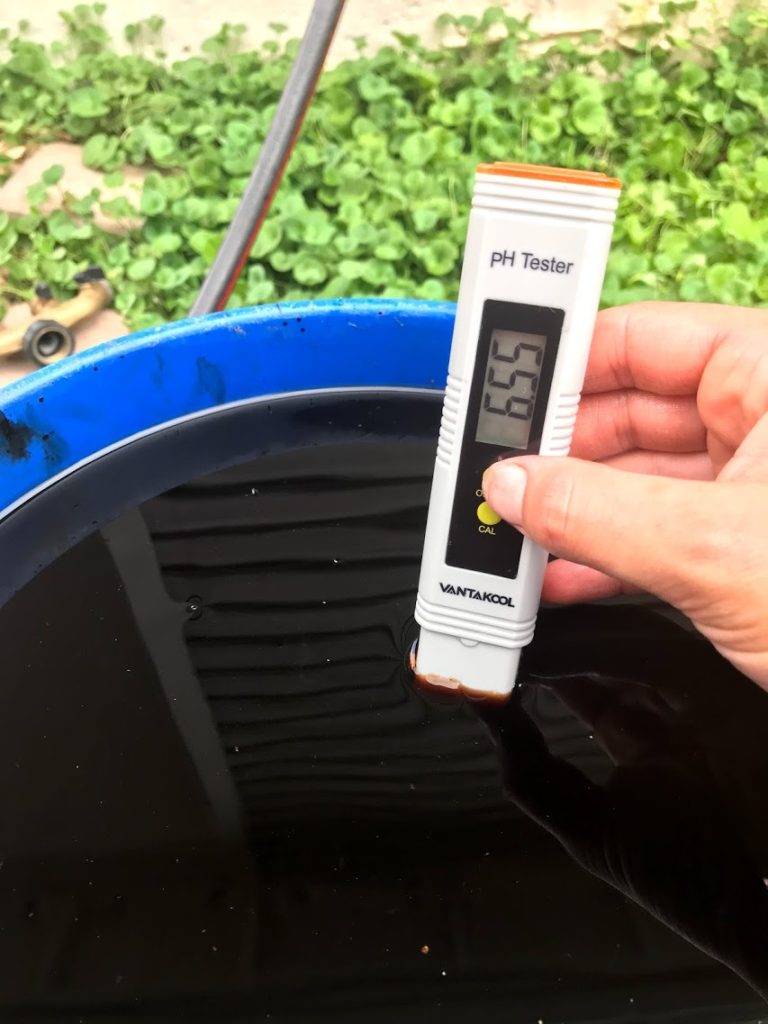
pH in 5-gallon bucket of water after adding amendments
Seaweed Extract and Humic Acids are 50% More Effective Together, and Ratio matters
According to a 10 year study conducted by Virginia Tech, the positive effects of each of these amendments is enhanced by 50% when used at a ratio of 5 parts humic acid to 2 parts seaweed extract.
Take a 5-gallon bucket and add:
- 5-oz of liquid humic acid
- 2-oz of seaweed extract.
Fill the rest of the bucket with water and add to your tree wells, vegetable gardens, and potted plants.
To start, give 1 gallon of this mixture to each tree or large pot. For a garden bed (raised or in-ground), try spraying 1-5 gallons (depending on garden size) on the soil with a pump sprayer early in the morning. Alternatively, try running the undiluted mixture through an in-line irrigation fertilizer injector.
The beautiful thing about both of these amendments is that they are natural and not actually fertilizers, so they cannot burn your plants. A little goes a long way, so start with roughly 1 gallon per plant and reassess after a week. You may find certain sensitive plants (such as avocados) benefit from a weekly application while other plants may only need a once-per-month application. You may also want to give this mixture more often in 110+ degree temperatures.
Each time you apply, you are strengthening the long-term health of your soil and helping your plants/trees grow stronger, more resilient root systems.
Twice during this past week of 110+ temperatures, I gave a gallon each to all of my mango and avocado trees.
Stay Cool!

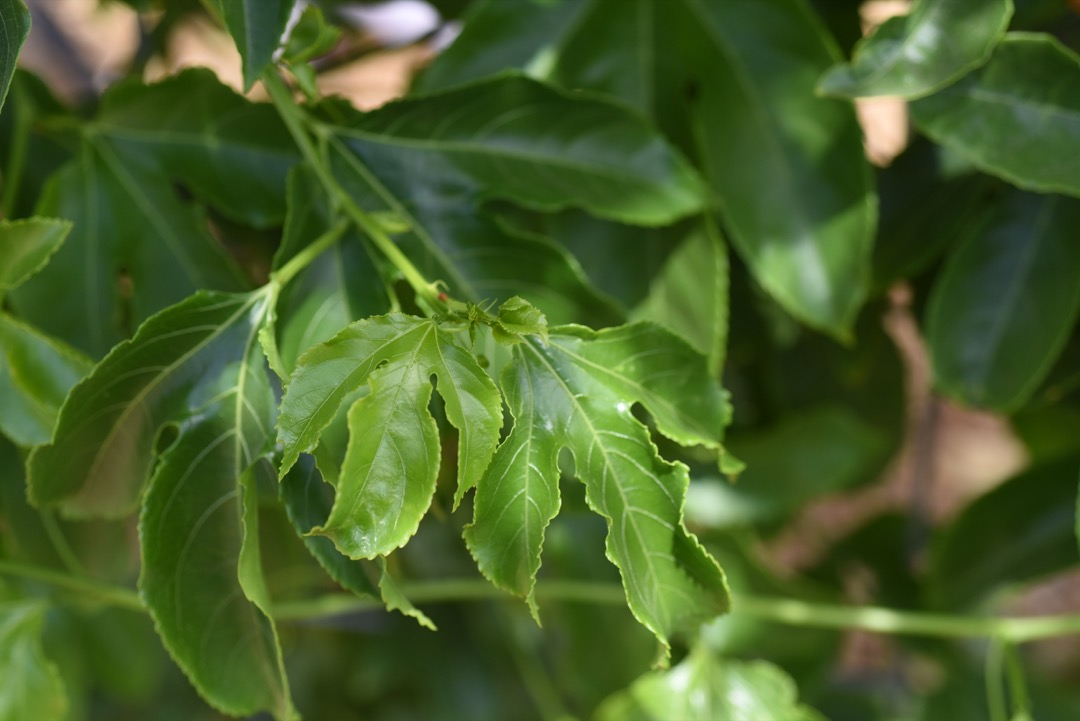
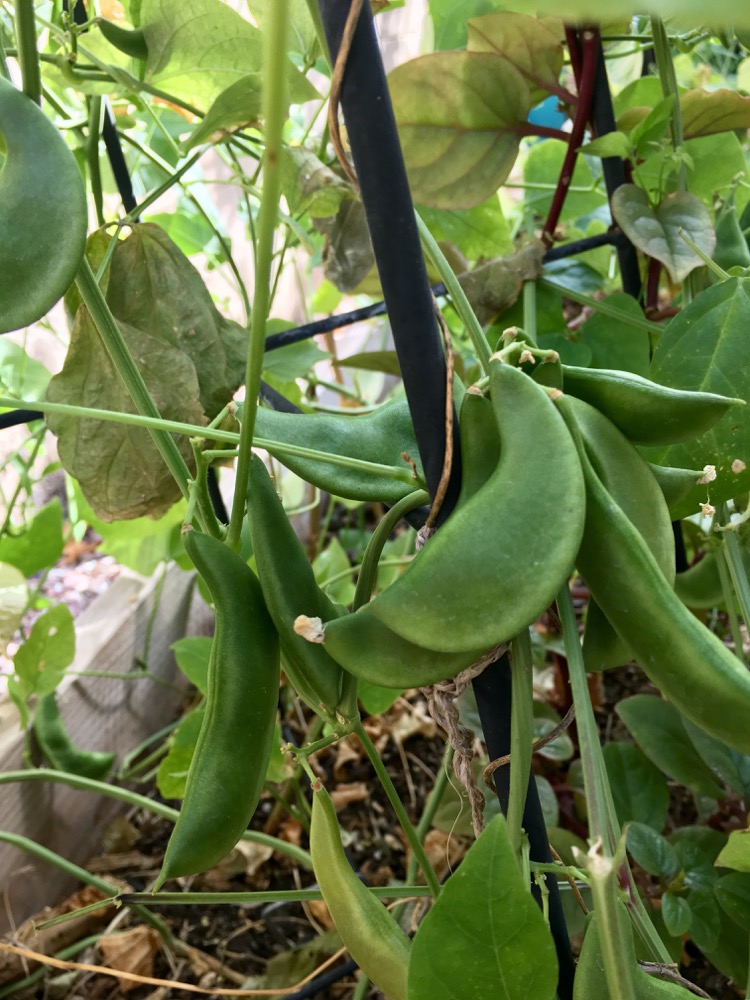
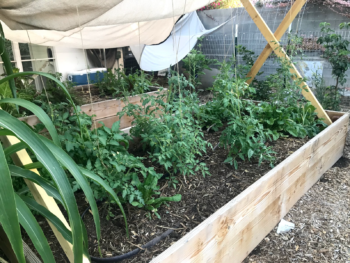
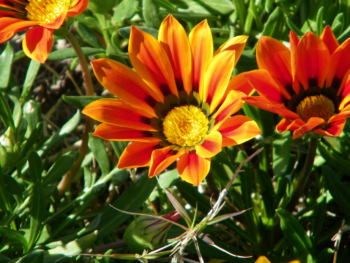
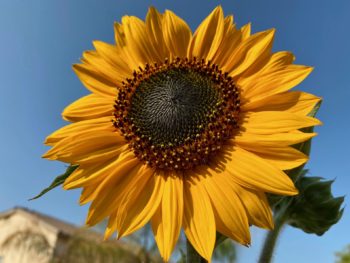
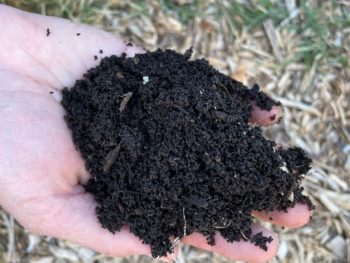
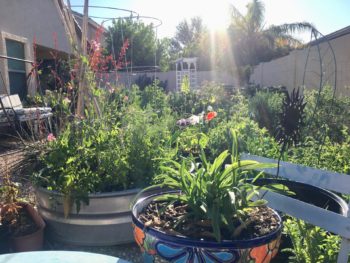

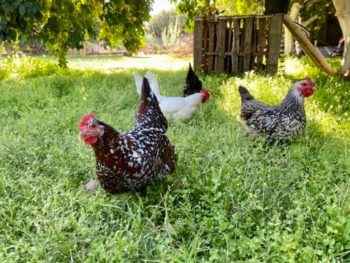
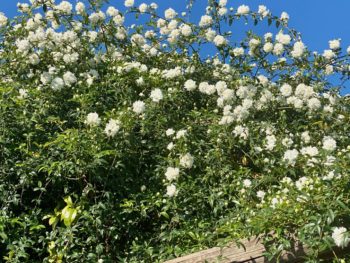
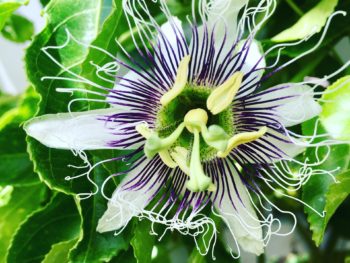
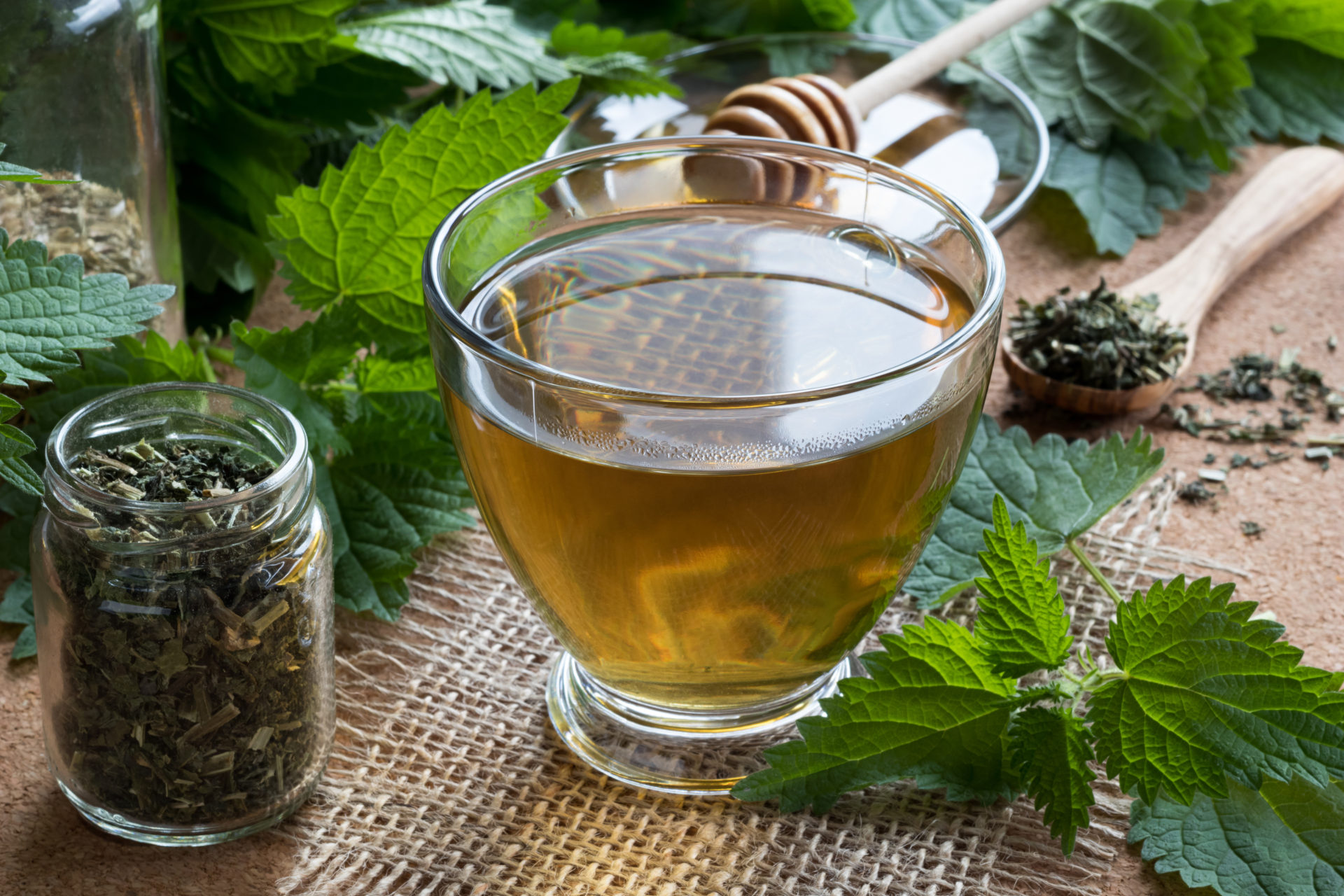 Exploring Stinging Nettle
Exploring Stinging Nettle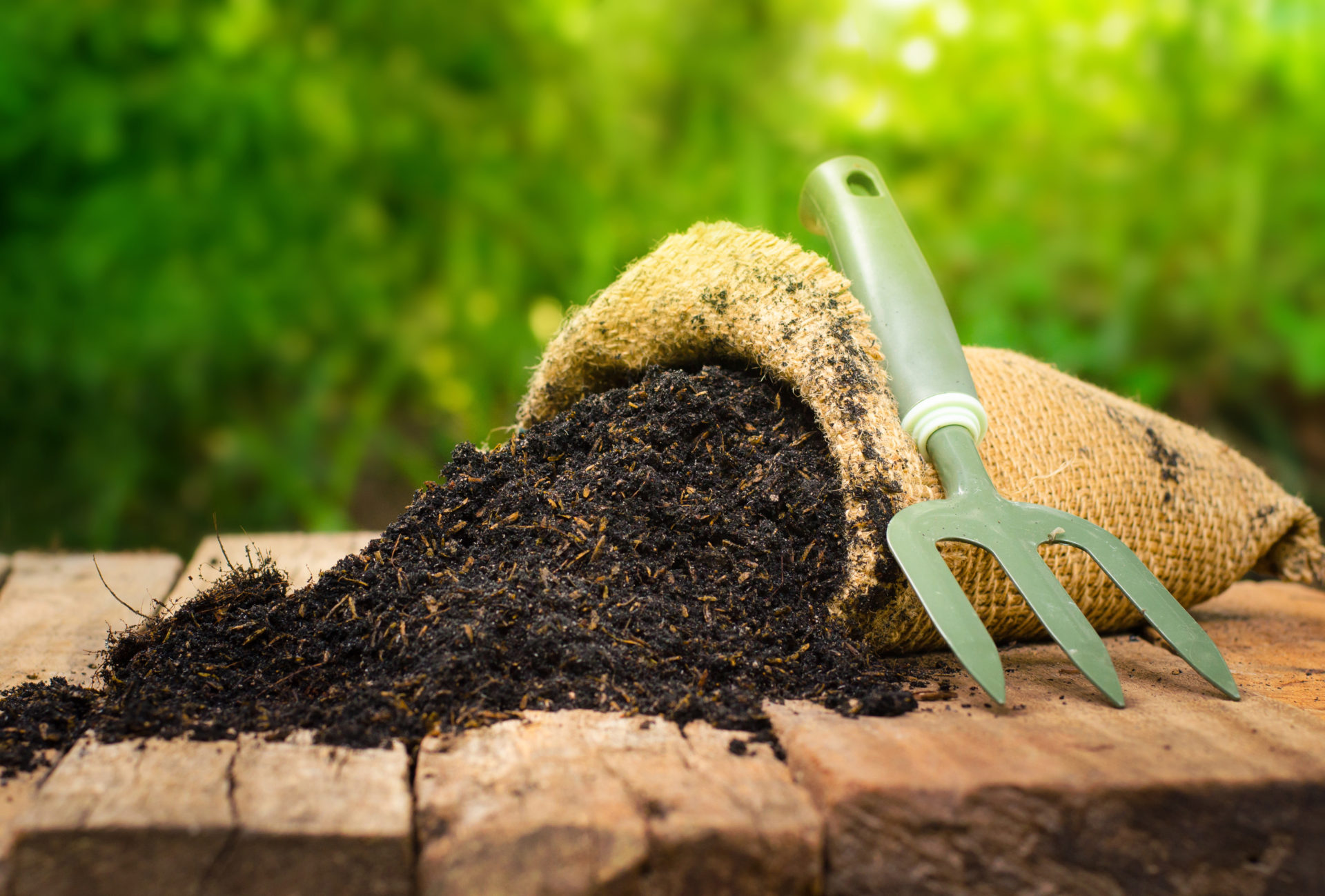
You are doing a bang up job! Your publications are easy to read! The illustrations are excellant! The topics are outstanding! Your relayed knowledge is over the top! Thank you!💚
PS will be using the info and sharing, if your permission is given! 💚💕💚
Marty – Thank you! We’re really passionate about this and love sharing what we’ve learned! Please share our site and the articles – we’d really appreciate it!